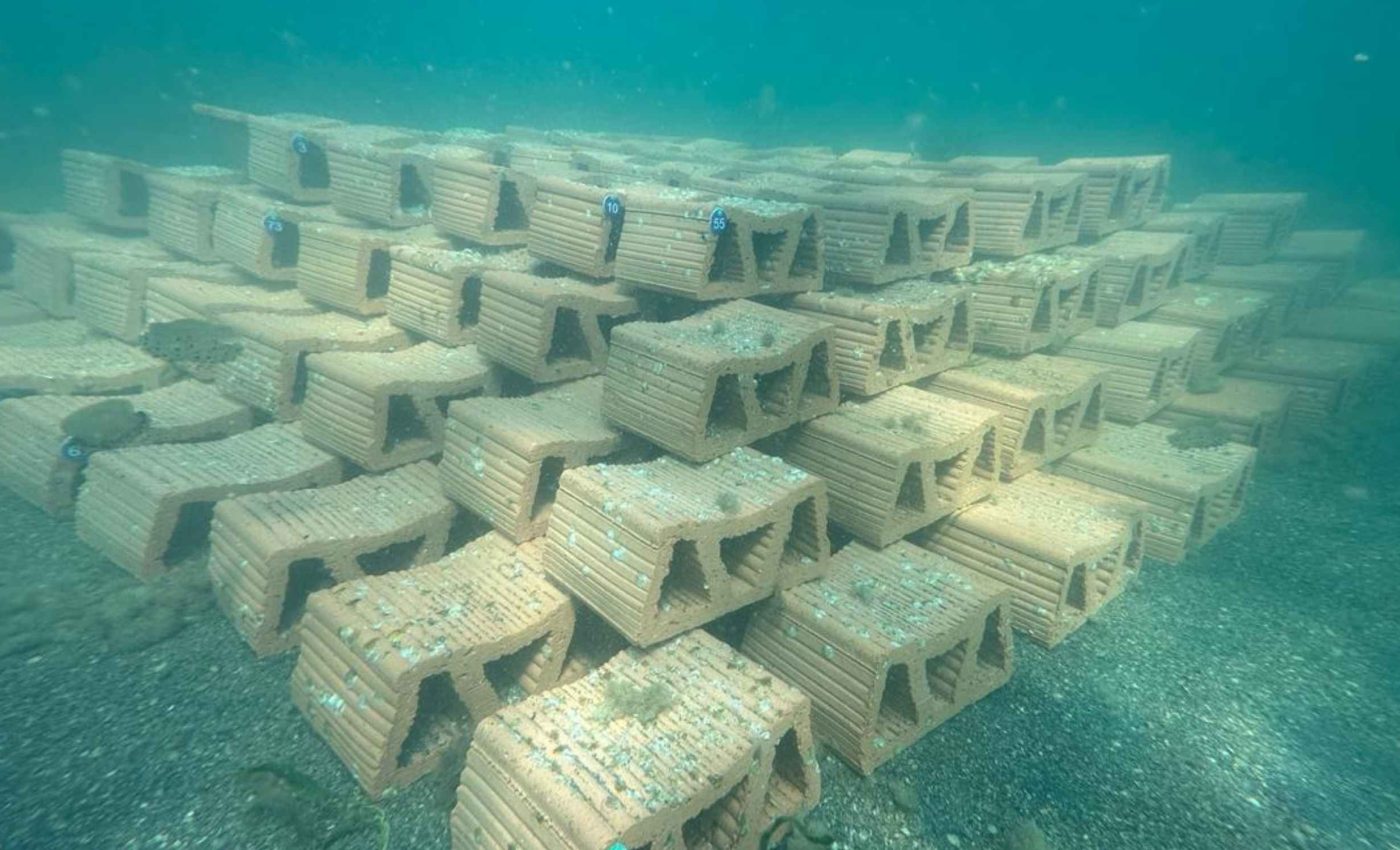
Officials are installing a pioneering artificial reef with native oysters
Spain installed its first reef of native flat oysters in the Mar Menor, with about 55,000 larvae, young oysters in their earliest free-swimming stage before attaching to a surface, fixed to biodegradable blocks. The pilot aims to improve water clarity and rebuild habitat.
The Spanish Institute of Oceanography (IEO), and the Association of Naturalists of the Southeast (ANSE), lead the effort near Isla del Barón. Teams will track survival and growth over the coming months.
Why oysters fit this lagoon
The Mar Menor suffers from eutrophication, excess nutrients that fuel algae and reduce oxygen. A recent paper explains how nitrogen and phosphorus from farms, towns, and flood pulses load the lagoon.
The work was led by Marina Albentosa, a marine scientist at IEO who coordinates RemediOS-2. Her research focuses on oyster physiology and nutrient removal in coastal waters.
Oysters help for a simple reason. They eat tiny particles in the water, clearing the soup that blocks light for seagrass and other life.
Flat oysters also build living structures that other species use as shelter. These three dimensional clusters change bare bottom into busy neighborhoods for crabs, fish, and worms.
What the pilot reef looks like
Project partners are using clay units designed for oysters to grip and grow. The company behind the blocks describes them as a low cost, biodegradable page that acts like scaffolding for new reefs.
Larvae raised from local broodstock were attached to each unit before deployment. This early step shortcuts the slow, risky wait for wild larvae to settle.
The footprint is deliberately small so scientists can check results and adapt. If survival and growth look strong, the setup can be scaled in a measured way.
Technicians will log growth, mortality, and fouling on regular visits. Those data feed into models of filtration and habitat value that guide the next moves.
How oysters help Mar Menor
Oysters are bivalves, shellfish with two hinged shells that filter water as they feed. By removing algae and particles, they can increase water clarity and tie up nutrients in tissue and shell.
They also stabilize the seafloor and provide surfaces for other life to attach. As clusters thicken, the habitat becomes more complex, which tends to draw in more species.
“Oyster gardening has several objectives: to raise public awareness of the problems facing the Mar Menor, to promote the flat oyster and, above all, to demonstrate the role these bivalves can play in the recovery of aquatic ecosystems,” explains Albentosa.
Volunteers who care for oysters in baskets are helping collect clean, comparable measurements.
Field teams will test whether filtration by oysters can measurably cut suspended matter. They will also watch how quickly other species move in as the structure grows.
What happens next
The next phase links oysters and hatchery work to field tests. A recent hatchery study shows local broodstock can produce seed at useful scales for restoration.
Using local parents matters for biosecurity and adaptation. It keeps the genetic identity of Mar Menor oysters intact while supplying seed for pilots.
The team will compare growth and survival across seasons and sites. Results will reveal when conditions are best for settlement, growth, and filtration.
Clear success would be steady survival through warm months and rapid gains in shell size. It would also include richer species counts on and around the blocks.
Tracking the water
Managers will track water transparency as a basic indicator of progress. They will also sample for nitrogen and phosphorus to see if oysters lower peaks after runoff.
The reef will be checked after storms that stir the lagoon. Those events test anchoring choices, block placement, and larval attachment strength.
Policy is in the mix as well. Pilots like this can shape restoration aquaculture, farming designed to deliver ecosystem benefits, by defining safe gear, best seasons, and siting rules.
Officials will weigh costs and benefits as they consider expansion. The science will show if oysters can complement on land nutrient controls that the lagoon still needs.
Mar Menor oyster reef success
Several pieces must align for long term success. Local seed supply, careful site choice, and steady monitoring are the basics that keep momentum.
In the background, an official notice confirms the pilot’s goals and outlines how partners will evaluate bioextraction and biodiversity gains. Those results will decide whether this small start grows into a network of new habitats.
The broader story is practical and local. A small, well tracked reef can show what oysters can and cannot do in this lagoon.
Flat oysters will not fix land based nutrient inputs on their own. They can, however, add a natural filter and a hard habitat that the system lacks.
If the monitoring shows clear trends, more patches can follow. Each patch would be placed with a precise purpose, tied to local currents and bottom type.
—–
Like what you read? Subscribe to our newsletter for engaging articles, exclusive content, and the latest updates.
Check us out on EarthSnap, a free app brought to you by Eric Ralls and Earth.com.
—–













